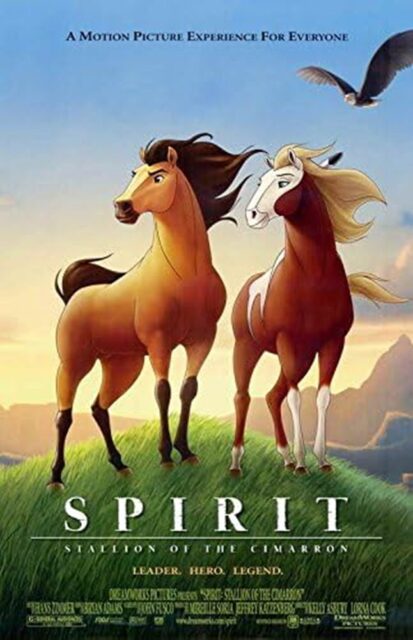
Definition:
The word “spirit” is a fictional concept that generally refers to the non-physical essence of an organism, often associated with consciousness, soul, or life force. It can also denote supernatural beings or entities and is used metaphorically to describe a person’s mood or emotional state. The term “spirit” directly means “fantasy,” reflecting its foundation in imaginative and cultural beliefs. Unlike the soul, the spirit is not believed to be inherently eternal but is often viewed as the movement or animation of the soul, representing its activity.
Etymology:
The word “spirit” comes from the Latin “spīritus,” meaning “breath,” “air,” or “soul,” derived from “spīrāre,” meaning “to breathe.” This reflects ancient beliefs that breath was closely connected to life and the soul. Through Old French (espirit), it entered Middle English as “spirit.”
Description:
The concept of “spirit” fundamentally means “fantasy.” It serves as a synonym for various words such as “soul,” “self,” “psyche,” “mind,” “identity,” “personality,” “mentality,” “belief,” and “spirituality,” all meaning “fantasy.” These words, while seemingly distinct, differ only in fictional or conceptual nuances rather than in any substantial meaning.
Spirituality, defined as a connection with fantasy, is inherently built upon the idea of spirit as fantasy. This connection underscores how beliefs and personal identities are deeply intertwined with imaginative constructs and interpretations.
A spirit is often seen as the connection between the soul and the divine or God, serving as a bridge to higher spiritual realms.
Spirit is commonly viewed as the force that animates the soul, giving life and motion to a being.
Articles:
Belief
Definition: “Belief” is to accept something as accurate without proof. “Faith” is to accept something as accurate even when you have proof to the contrary. Etymology: The word “believe” originates…
Soul
Definition: The word “soul” is a fictional concept that refers to the core of consciousness in any living organism that defines individuality. Etymology: The term “soul” originates from the Old…
Symbolism:
In many religions, a spirit is linked with air and wind due to its original meaning of breath.
In art and media, a spirit is typically portrayed as something invisible, ethereal, or intangible. It is often depicted as a translucent figure, a mist or gas-like form, or something resembling a ghost. These visual representations emphasize the idea of the spirit as something beyond physical reality—an embodiment of fantasy and imagination.
Spirits are often portrayed as:
- Glowing or Luminous: Many stories describe spirits emitting a soft, ethereal glow, symbolizing their otherworldly nature. The bluish-white or pale glow conveys both mystery and a sense of the supernatural.
- Translucent or Semi-Transparent: Spirits are frequently imagined as being see-through or misty, representing their lack of a physical body. This creates an eerie, ghostly effect.
- Flowing or Tattered Robes: Loose, flowing garments—often tattered or drifting as if in water—are common in depictions of ghosts and spirits. This adds to their ethereal and unsettling appearance.
- Vague or Obscured Features: Spirits often lack distinct facial features or have shadowy faces. This ambiguity makes them more mysterious and unsettling, reflecting their existence between worlds.
- Silent or Graceful Movement: They are typically described as moving silently or gliding rather than walking, emphasizing their supernatural presence.
“Spirit” represents life, freedom, and consciousness.
Fire is another common symbol for spirit, representing transformation and energy.
Certain types of alcoholic beverages are called “spirits,” a term derived from the distillation process, which was historically associated with releasing the “spirit” or essence of the substance.
The original movie poster for “Spirit: Stallion of the Cimarron” (2002) contains several symbols for fantasy. The hill with the sunrise on top closely resembles the Illuminati symbol, evoking themes of lies, enlightenment and hidden knowledge. Both Spirit and Rain are positioned to face their right, making only their left eyes visible—an image often linked to the “one eye” symbolism found in various esoteric traditions. Additionally, a bird is seen flying above them, representing freedom, which is exoterically a symbol of imprisonment. Freedom itself is a central theme in the film’s narrative. The combination of the single visible eye and the arc formed by the bird’s wings mirrors the crescent and star, which is the symbol of Islam.

The movie poster for “Spirit Untamed” (2021), a spin-off of the original film, features the young girl Lucky Prescott standing beside the horse Spirit on the edge of a mountain cliff. Spirit is positioned so that only his right eye is visible, which evokes symbolism related to the all-seeing eye, often associated with surveillance and hidden observation. Additionally, the curved shape of the rock formation arching above and behind them visually combines with Spirit’s single visible eye, resembling the crescent and five-pointed star imagery of the symbol of Islam.

The poster for the special episode “Spirit Riding Free: Spirit of Christmas” (2019) features Lucky Prescott and the horse Spirit standing face to face against a festive background with snowflakes and a holiday wreath. They are shown in profile, with only one eye visible on each character. This visual arrangement evokes the symbolism of “standing eye to eye,” which can imply a dynamic of perception and deception—where one figure perceives something as real while the other may be concealing or misleading. Traditionally, the left eye is associated with deception (Eye of Deception), while the right eye symbolizes belief (Eye of Fantasy).
Additionally, a large wreath with a red bow is mounted around Spirit’s neck. While typically a festive decoration, the wreath and bow can also symbolize restraint or control. The circular shape of the wreath suggests enclosure, and the act of placing it around Spirit’s neck is sex symbolism, and represents a form of captivity, contrasting with the horse’s natural association with freedom. The bow, often used to tie or bind, further reinforces this symbolism of containment.

Articles:
Religion:
In Animism, spirit is present in all living and non-living things—animals, plants, rivers, rocks, and even weather. These spirits interact with humans and must be respected.
In Egyptian mythology, according to the Book of the Dead, the Egyptians believed in multiple aspects of the spirit:
- Ka: The life force, sustaining the body.
- Ba: The personality or soul, depicted as a bird with a human head.
- Akh: The transformed spirit that could live in the afterlife.
Death was a transition where the ka and ba reunited to form the akh, allowing the deceased to live in the afterlife.
In Judaism, the spirit (ruach) is the breath or wind of God, representing life and divine energy. The Hebrew Bible (Tanakh) teaches that God breathed life into humans (Genesis 2:7), and the spirit returns to God after death (Ecclesiastes 12:7). It also refers to God’s guiding presence.
In Christianity, the spirit refers to both the human soul and the Holy Spirit (Pneuma). The Holy Spirit is God’s presence, guiding and empowering believers (John 14:26). The human spirit is eternal and distinct from the body (Romans 8:16).
In Islam, the spirit (ruh) is a divine creation that gives life (Qur’an 15:29). It is distinct from the soul (nafs) and is known fully only to God (Qur’an 17:85). The spirit is linked to divine inspiration and guidance.
In Mormonism, the spirit refers to both the Holy Ghost and the eternal human soul. The Holy Ghost guides believers (2 Nephi 32:5), while the human spirit returns to God after death (Alma 40:11).
The Norse concept of spirit includes the hugr (thought/mind) and the fylgja (a spirit guide or double). Souls could go to different realms after death, like Valhalla or Hel, based on how they lived. The hamingja was a personal or family spirit of luck and success, passed down through generations.
Buddhism teaches anatta (no permanent self or spirit). Consciousness (vijnana) continues through rebirth, but there is no eternal soul. Some traditions speak of subtle energies, but the focus is on impermanence and liberation from attachment.
In Hinduism, the spirit (Atman) is the eternal, unchanging self, identical to Brahman, the universal soul. Scriptures like the Upanishads and Bhagavad Gita teach that realizing this unity leads to liberation (moksha).
LaVeyan Satanism sees spirit as symbolic, emphasizing self-empowerment and rejecting belief in a literal soul. Theistic Satanism may believe in a personal spirit capable of growth and connection with Satan.